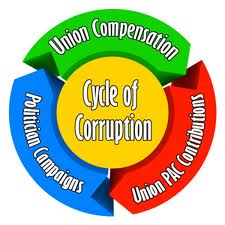It’s no surprise that young children like sugar and salt in their food and develop their preferences based on what their parents feed them, but new research suggests that how parents view their own self-regulation also is a contributing factor.
Food systems heavy in calories and light on recommended nutrition are a major factor contributing to global obesity and are a major challenge to parents of young children, says T. Bettina Cornwell, Phillip H. Knight Chair and head of the Department of Marketing in the University of Oregon’s Lundquist College of Business.
She’s lead author on a paper in the Journal of Public Policy & Marketing. The research explored the underlying dynamics of parental food preferences and how they are passed along to children by parental food choices for meals.
“A parent’s preference for sugar, fat and salt in their diet influences the amount of junk food they provide children in a typical week and in turn, this influences the child’s preference for sugar, fat and salt,” Cornwell said. “We show that regularly providing 3- to 5-year-old children with junk food influences their preferences for the same tastes. It also makes them less willing to eat vegetables.”
The four-member team developed two studies to explore how rigid parents are toward strategies of growth, learning and self-control. These mindsets, or lay theories, underlie everyday ideas about behavior, she said. At play is how limited or unlimited self-control is seen and whether it is fixed or malleable.

In the first study, researchers used self-report surveys from the parents of 81 preschool children to assess whether the frequency of exposure to junk food helps transmit parental tastes to the children. A solid connection was found, Cornwell said.
The second study dug deeper to see if parents’ mindsets influenced how often they exposed their children to junk food and what their children ate at school. Researchers drew from survey responses from 122 parent-children pairs and direct observations of preschoolers choosing vegetables during lunchtime.
Again, the researchers identified strong results. Children who were often exposed to fast and highly processed food at home were less likely to eat vegetables at preschool.
“A parent’s preference for sugar, fat and salt in their diet as well as their views of self-control come together to influence their choice to regularly give a child junk food,” Cornwell said. “Parents with a lower preference for sugar, fat and salt and with a growth mindset regarding developing self-control tend to limit the amount of junk food they provide to their children.”
The overall findings, Cornwell said, are clear: What parents do at home when it comes to meal selection influences the food choices their children make away from home.
Parents, she said, should explore their own beliefs about self-control to understand how they influence their children’s developing food preferences. Doing so, she said, may help parents improve their own diets in a way that benefits how their children eat.
There also are implications for the food industry.
Food manufacturers and brand managers, meanwhile, need to recognize that their heavy reliance on hyperpalatable products — those high in fat, salt and sugars that combine to override the ability to control consumption — often make it hard for children meet guidelines for healthy daily diets.
“Eating even a single fast food or processed meal as currently found in the marketplace makes it hard, if not impossible, for children to fall within the U.S. dietary guidelines for the entire day,” Cornwell said. “Products should be reformulated to be less hyperpalatable and new, healthier products should be developed.
***




 With U.S. students regularly placing behind 20 to 25 other nations in mathematics test scores, many education experts are wondering what the sources of the problem are and how we can take steps to fix them. Here’s a look at how American schools can improve their math curricula and help struggling students:
With U.S. students regularly placing behind 20 to 25 other nations in mathematics test scores, many education experts are wondering what the sources of the problem are and how we can take steps to fix them. Here’s a look at how American schools can improve their math curricula and help struggling students: ***
*** The study found that children of immigrants from high-achieving East Asian countries are still two-and-a-half years ahead of their western peers by the time they are 15. Photograph: Alamy
The study found that children of immigrants from high-achieving East Asian countries are still two-and-a-half years ahead of their western peers by the time they are 15. Photograph: Alamy ***
***









